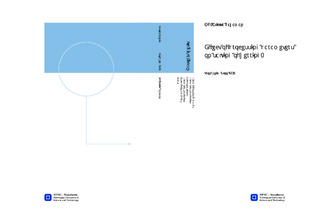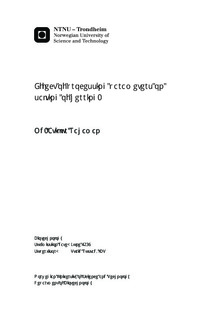| dc.description.abstract | Herring is a fatty fish that contain Omega-3 fatty acid. Consumption of herring gives us many essential nutrients connected to their proteins, and lipids that are very rich in omega-3 fatty acids. These omega-3 fatty acids are highly susceptible to oxidation. For this good preservation technique is very important. The primary purpose of salting is preservation. The ripening process appears to be mainly proteolytic, leading to a degradation of muscle proteins resulting in an increase in soluble nitrogenous compounds such as peptides and free amino acids.The function of proteolytic enzymes is to break down the peptide bonds of proteins resulting in smaller peptides and formation of smaller peptides and amino acids from the protein molecules. During lipid oxidation, endogenous antioxidants are consumed and several primary and secondary oxidation compounds are formed, which results in reducing the sensory quality and may damage protein functionality because of cross-reactions with proteins. Lipolytic enzymes are responsible for enzymatic hydrolysis of fat, breaking down fat into free fatty acids and glycerol. During the ripening and salting of the herring, the raw taste of the herring gradually changes. In this case, addition of salt to the fish is an effective way to slow down the enzymatic reactions and at a very high concentration (20-25 %) of salt, the enzymatic process decreased to almost no activity level. This will increase the shelf life of the product without freezing it.The objective of this study was to study the proteolytic and lipolytic activity in herring, active during the ripening process of herring. The enzymatic activity during salting was studied as a function of pH, temperature and salt concentration, and the activity in both muscle and intestines was studied. In this thesis, some selected proteolytic enzymes, for instance; trypsin, chymotrypsin and cathepsins have been analysed. How the biochemical parameters of herring changes by the enzymatic ripening procedure has also been studied; proteolytic and lipolytic enzyme activity and how protease activity affect the peptide content in herring. The highest General proteolytic activity (GPA) was found in intestine at pH 6. The activity goes up to higher level in the presence of salt and buffer. The lowest activity was found in muscle tissue at pH 7. The activity of cathepsin B was higher in intestine at pH 6, whereas for the muscle very low activity was found at pH 5 also it had the maximum activity at 30 0C to 40 0C. Trypsin had shown the higher activity at pH 5 in 40 °C and in every cases intestine shown the higher activity than muscle. Chymotrypsin was found to have about 10 times higher activity than trypsin, the second highest measured enzyme in herring filet. It means that the changes in chymotrypsin activity will have higher impact on total proteolytic activity. Acid soluble peptide of herring muscle decreased gradually when salt content increased and If NaCl is exchanged with KCl also increase the activity; this shows that the proteases are affected by the type of ions. | nb_NO |

